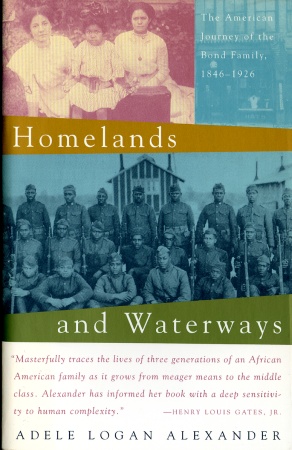White Over Black: American Attitudes Toward the Negro, 1550-1812Posted in Books, Economics, History, Media Archive, Monographs, Slavery, Social Science, United States on 2010-03-16 00:38Z by Steven |
White Over Black: American Attitudes Toward the Negro, 1550-1812
University of North Carolina Press
1968-09-25 (Republished: September 1995)
671 pages
8.9 x 6 x 1.4 inches
ISBN: 978-0-8078-4550-9
Published for the Omohundro Institute of Early American History and Culture, Williamsburg, Virginia
Winthrop D. Jordan (1931-2007)
- Winner of the 1968 Francis Parkman Prize, Society of American Historians
- Winner of the 1969 National Book Award
- Winner of the 1969 Bancroft Prize, Columbia University
- Winner of the 1968 Ralph Waldo Emerson Award, Phi Beta Kappa
The paperback edition of Jordan’s classic and award-winning work on the history of American race relations.
Table of Contents
Preface
Acknowledgments
Part One. GENESIS 1550-1700
I. First Impressions: Initial English Confrontation with Africans
- The Blackness Without
- The Causes of Complexion
- Defective Religion
- Savage Behavior
- The Apes of Africa
- The Blackness Within
II. Unthinking Decision: Enslavement of Negroes in America to 1700
- The Necessities of a New World
- Freedom and Bondage in the English Tradition
- The Concept of Slavery
- The Practices of Portingals and Spanyards
- Enslavement: The West Indies
- Enslavement: New England
- Enslavement: Virginia and Maryland
- Enslavement: New York and the Carolinas
- The Un-English: Scots, Irish, and Indians
- Racial Slavery: From Reasons to Rational
Part Two. PROVINCIAL DECADES 1700-1755
III. Anxious Oppressors: Freedom and Control in a Slave Society
- Demographic Configurations in the Colonies
- Slavery and the Senses of the Laws
- Slave Rebelliousness and the White Mastery
- Free Negroes and Fears of Freedom
- Racial Slavery in a Free Society
IV. Fruits of Passion: The Dynamics of Interracial Sex
- Regional Styles in Racial Intermixture
- Masculine and Feminine Modes in Carolina and America
- Negro Sexuality and Slave Insurrection
- Dismemberment, Physiology, and Sexual Perceptions
- The Secularization of Reproduction
- Mulatto Offspring in a Biracial Society
V. The Souls of Men: The Negro’s Spiritual Nature
- Christian Principles and the Failure of Conversion
- The Question of Negro Capacity
- Spiritual Equality and Temporal Subordination
- The Thin Edge of Antislavery
- Inclusion and Exclusion in the Protestant Churches
- Religious Revivial and the Impact of Conversion
VI. The Bodies of Men: The Negro’s Physical Nature
- Confusion, Order and Hierarchy
- Negroes, Apes, and Beasts
- Rational Science and Irrational Logic
- Indians, Africans, and the Complexion of Man
- The Valuation of Color
- Negroes Under the Skin
Part Three. THE REVOLUTIONARY ERA 1755-1783
VII. Self-Scrutiny in the Revolutionary Era
- Quaker Conscience and Consciousness
- The Discovery of Prejudice
- Assertions of Sameness
- Environmentalism and Revolutionary Ideology
- The Secularization of Equality
- The Proslavery Case of Negro Inferiority
- The Revolution as Turning Point
Pt. 4 SOCIETY AND THOUGHT 1783-1812
VIII. The Imperatives of Economic Interest and National Identity
- The Economics of Slavery
- Union and Sectionalism
- A National Forum for Debate
- Nationhood and Identity
- Non-English Englishment
IX. The Limitations of Antislavery
- The Pattern of Antislavry
- The Failings of Revolutionary Ideology
- The Quaker View Beyond Emancipation
- Religious Equalitarianism
- Humanitarianism and Sentimentality
- The Success and Failure of Antislavery
X. The Cancer of Revolution
- St. Domingo
- Non-Importation of Rebellion
- The Contagion of Liberty
- Slave Disobedience in America
- The Impact of Negro Revolt
XI. The Resulting Pattern of Separation
- The Hardening of Slavery
- Restraint of Free Negroes
- The Walls of Separation
- Negro Churches
Part Five THOUGH AND SOCIETY 1783-1812
XII. Thomas Jefferson: Self and Society
- Jefferson: The Tyranny of Slavery
- Jefferson: The Assertion of Negro Inferiority
- The Issue of Intellect
- The Acclaim of Talented Negroes
- Jefferson: Passionate Realities
- Jefferson: White Women and Black
- Interracial Sex: The Individual and His Society
- Jefferson: A Dichotomous View of Triracial America
XIII. The Negro Bound by the Chain of Being
- Linnaean Categories and the Chain of Being
- Two Modes of Equality
- The Hierarchies of Men
- Anatomical Investigations
- Unlinking and Linking the Chain
- Faithful Philosophy in Defense of Human Unity
- The Study of Man in the Republic
XIV. Erasing Nature’s Stamp of Color
- Nature’s Blackball
- The Effects of Climate and Civilization
- The Disease of Color
- White Negroes
- The Logic of Blackness and Inner Similarity
- The Winds of Change
- An End of Environmentalism
- Persistent Themes
XV. Toward a White Man’s Country
- The Emancipation and Intermixture
- The Beginning of Colonization
- The Virginia Program
- Insurrection and Expatriation in Virginia
- The Meaning of Negro Removal
XVI. Exodus
Note on the Concept of Race
Essay on Sources
Select List of Full Titles
Map: Percentage of Negroes in Total Non-Aboriginal Population, 1790
Index









